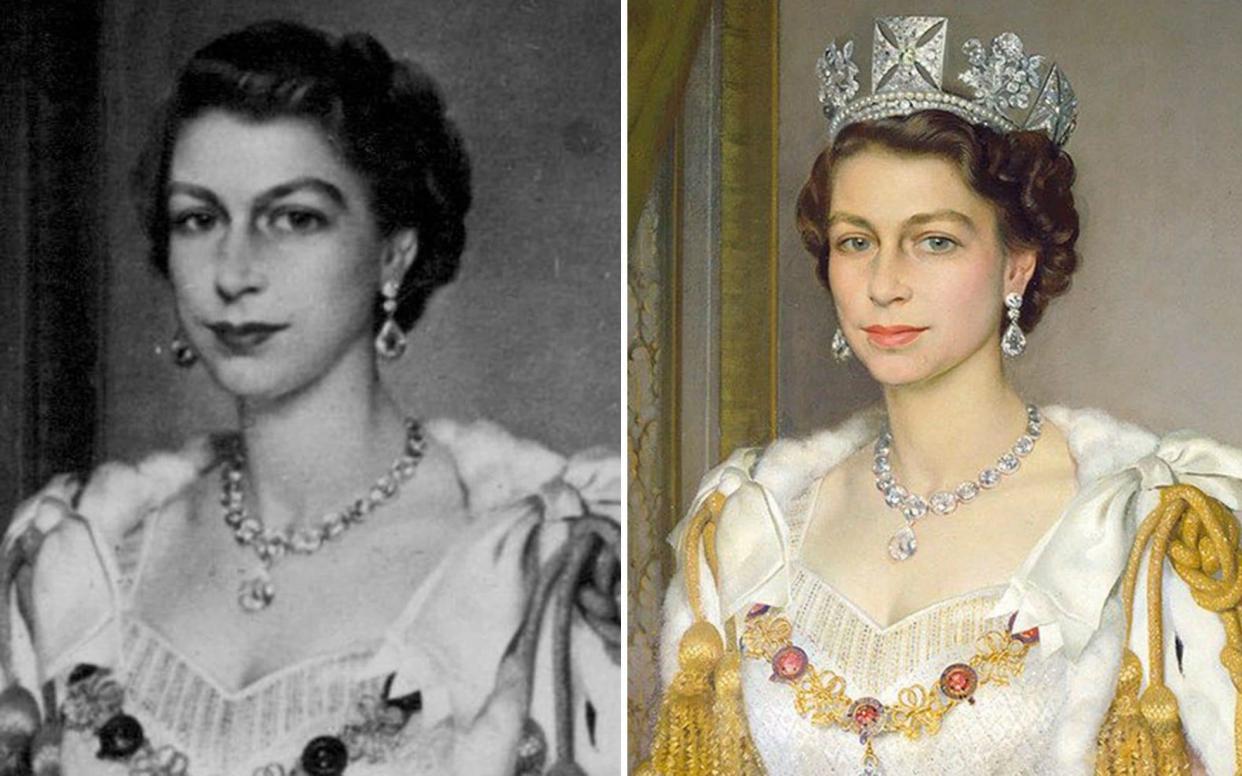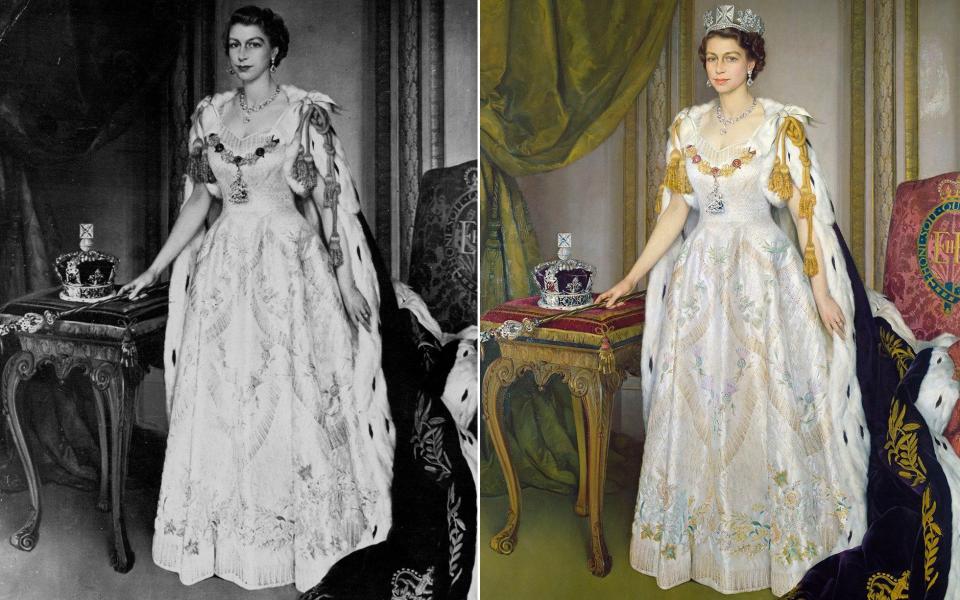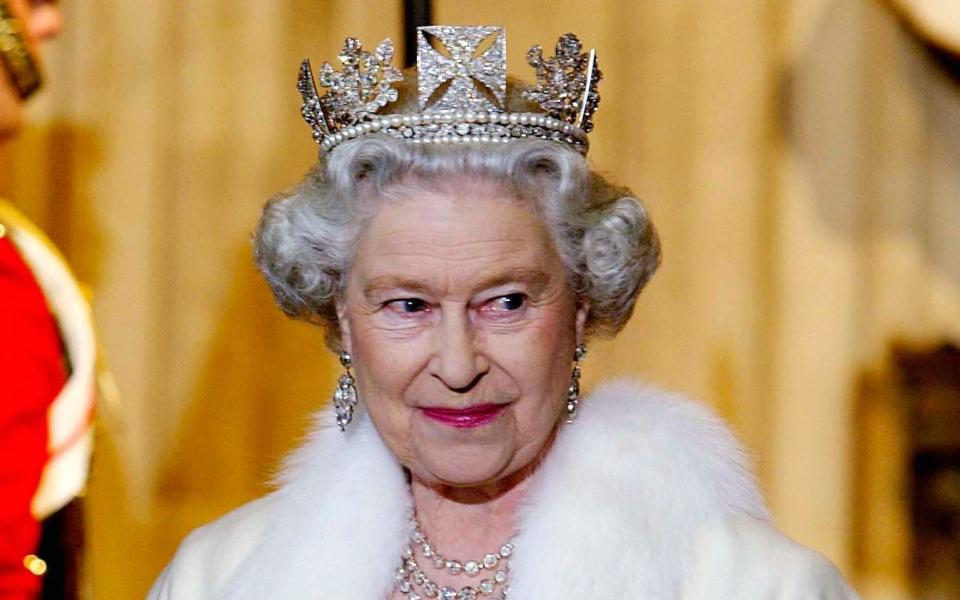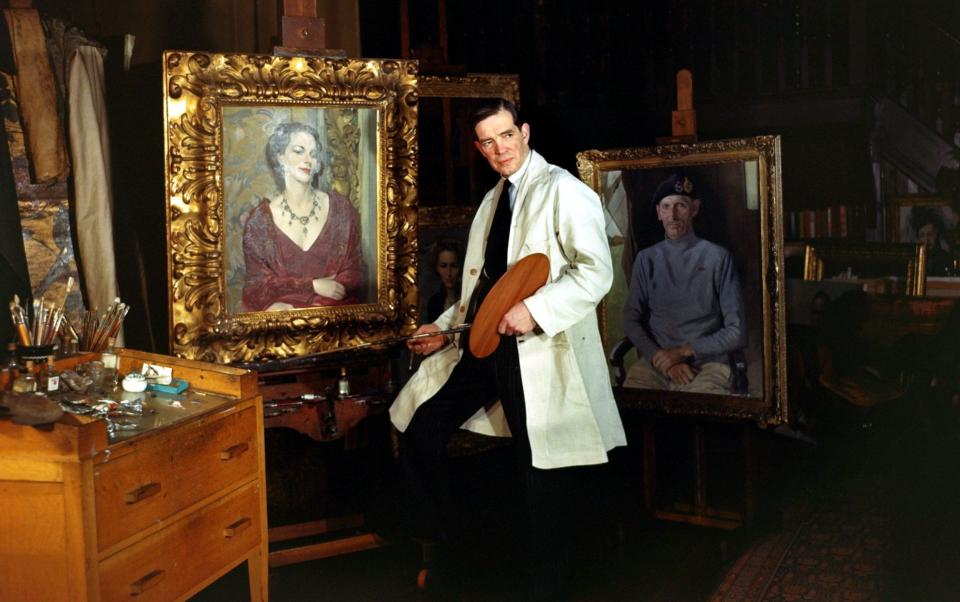The Queen and the tale of the missing Diamond Diadem

Posing for her portrait in the Throne Room of Buckingham Palace, the Queen looks - as always - as if she was born to wear the Diamond Diadem.
As it happened, she was not wearing it at all.
The famous diadem, which has been captured on coins, banknotes, postage stamps and worn at key moments throughout the Queen’s reign, was in fact added an entire year after the painting was completed via the medium of cellophane.
The coronation portrait, painted by Sir Herbert James Gunn in 1953, is to be included in a new Platinum Jubilee display at Windsor Castle, with its full story told for the first time.
Curators will reveal how Sir Herbert added the Diamond Diadem as an afterthought, painting it onto a piece of transparent cellophane laid over the canvas as a test before asking the Queen’s approval.
Remarkably, the painting had already been on public display at the Royal Academy with the bare-headed Queen before the artist and sitter agreed it could be improved.
The finished work has become the official record of the coronation, while the story of how it was created was lost from the memories of everyone except the painter’s family.

As Royal Collection Trust re-examined notes about the painting ahead of a new exhibition, they found a record of a 1998 conversation between a former Surveyor of the Pictures and a close relative of Sir Herbert.
They will relay it to visitors for the first time as part of a special display, Platinum Jubilee: The Queen’s Coronation, at Windsor Castle from July 7.
Anna Reynolds, the deputy surveyor of the Queen’s Pictures, said the portrait was re-examined ahead of the exhibition from a conservation perspective, with old files opened in a bid to give it the “attention it deserves”.
“The artist evidently felt there was something missing, it clearly weighed on his mind,” said Reynolds. “He knew it would be an important painting so widely known across the world.
“He came up with this idea of painting onto a piece of cellophane, laying it over the painting and showing the Queen within and without. They agreed it would look better with.
“It’s really cleverly integrated, you’d never know she wasn’t actually wearing it.
“It’s not usual for artists to make changes to paintings after they’d be finished, but I haven’t heard of it in an instance like this for such an important picture.”

She added the decision could have been made to “balance out” the other objects in the picture - the Imperial State Crown and sceptre, Queen Victoria's collet diamond necklace and diamond drop earrings, and the Collar and Badge of the Order of the Garter - with the top part of the picture appearing emptier without the diadem.
The portrait has hung above a fireplace in the Garter Throne Room at Windsor Castle since 2003, one of more than 7,000 paintings in the Royal Collection.
The Queen initially sat for the artist at Balmoral, with a variety of studies created and discussed with Her Majesty.
In December 1953, she left for a long overseas tour with Sir Herbert given access to her robes and the Crown Jewels so he could keep working before more sittings on her return.
After it was finished, it was put on display in the Royal Academy’s Summer Exhibition in 1954 before the artist had second thoughts.

The Diamond Diadem itself will be on display in a second exhibition, Platinum Jubilee: The Queen’s Accession, at the summer opening of the State Rooms at Buckingham Palace from July 22.
It was originally created for the coronation of George IV in 1821 and is immediately recognisable for featuring as part of the Queen’s image on postage stamps and coins throughout her reign.
It was first worn by the Queen when she attended the first State Opening of Parliament of her reign in 1952, and later on her journey to the coronation.

